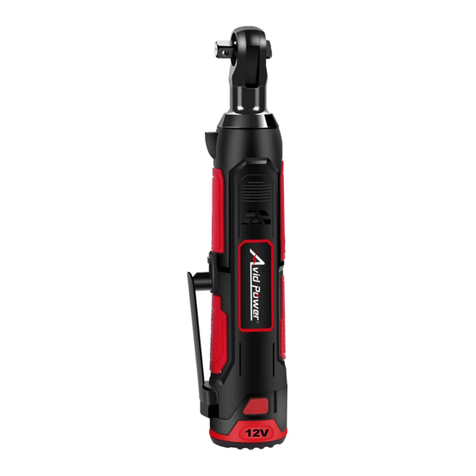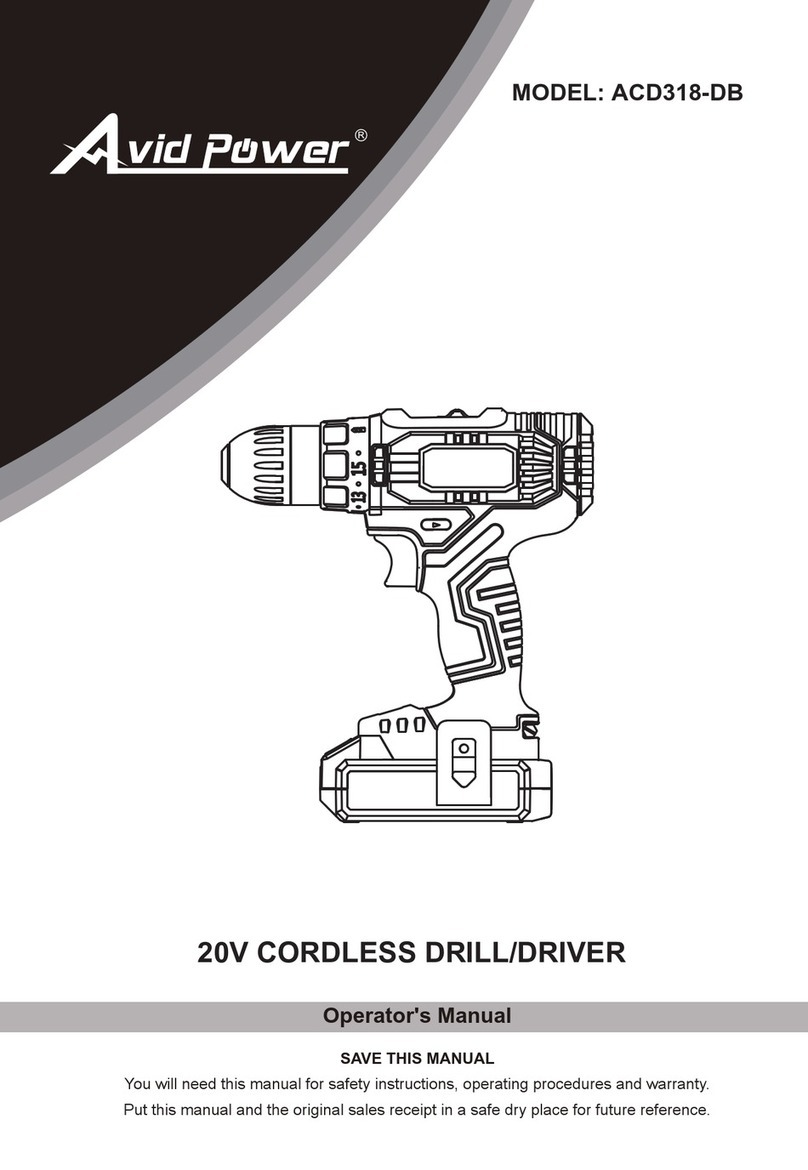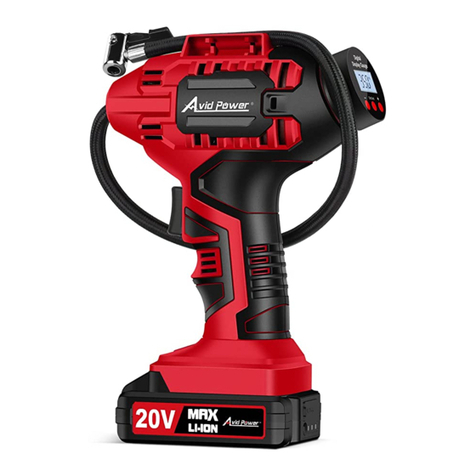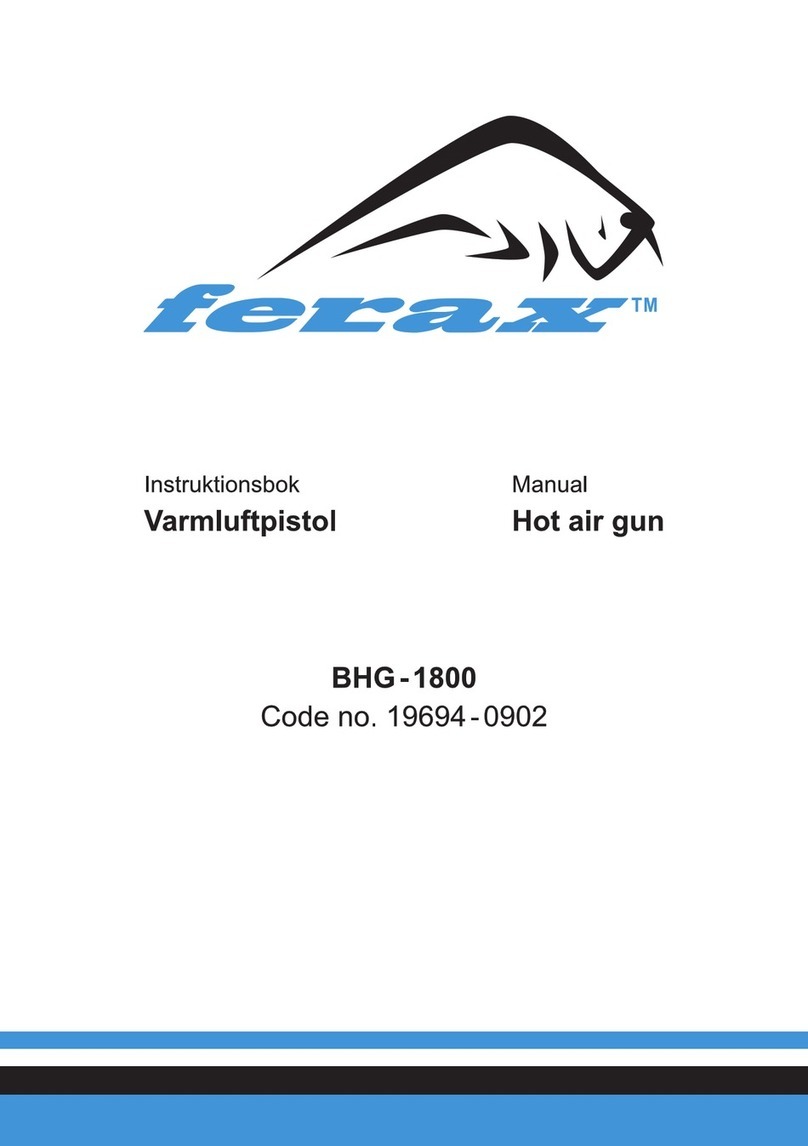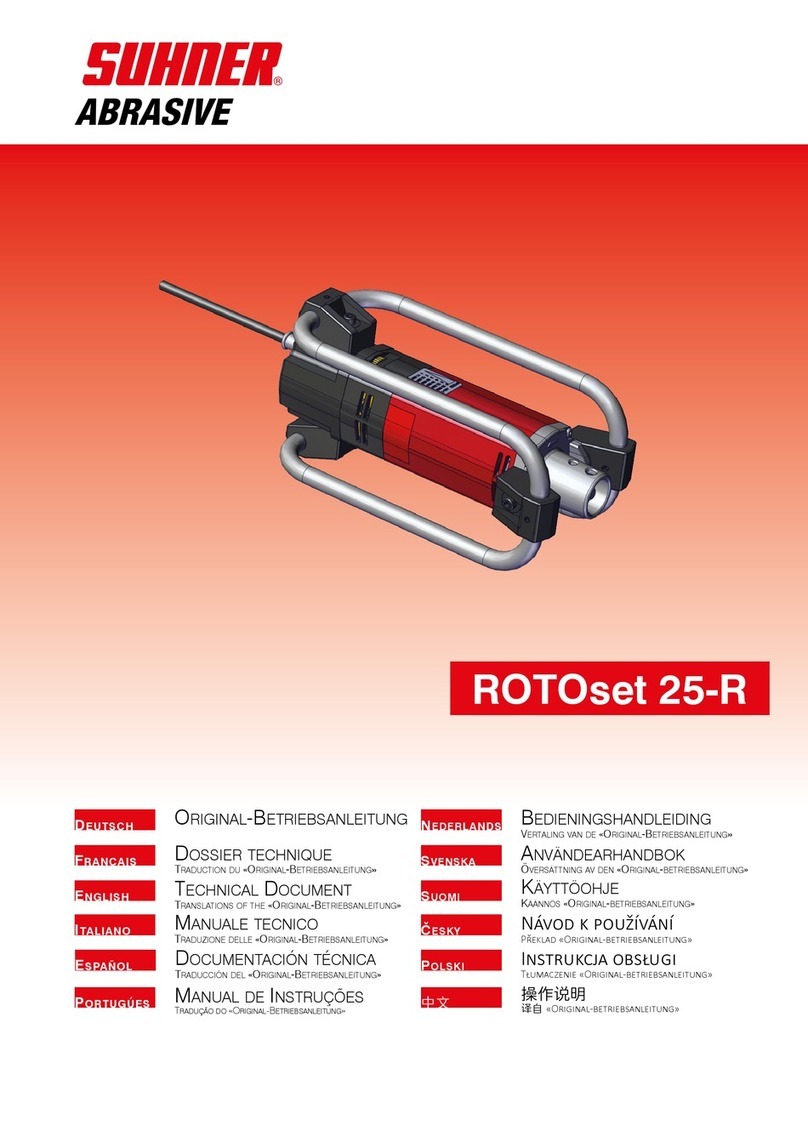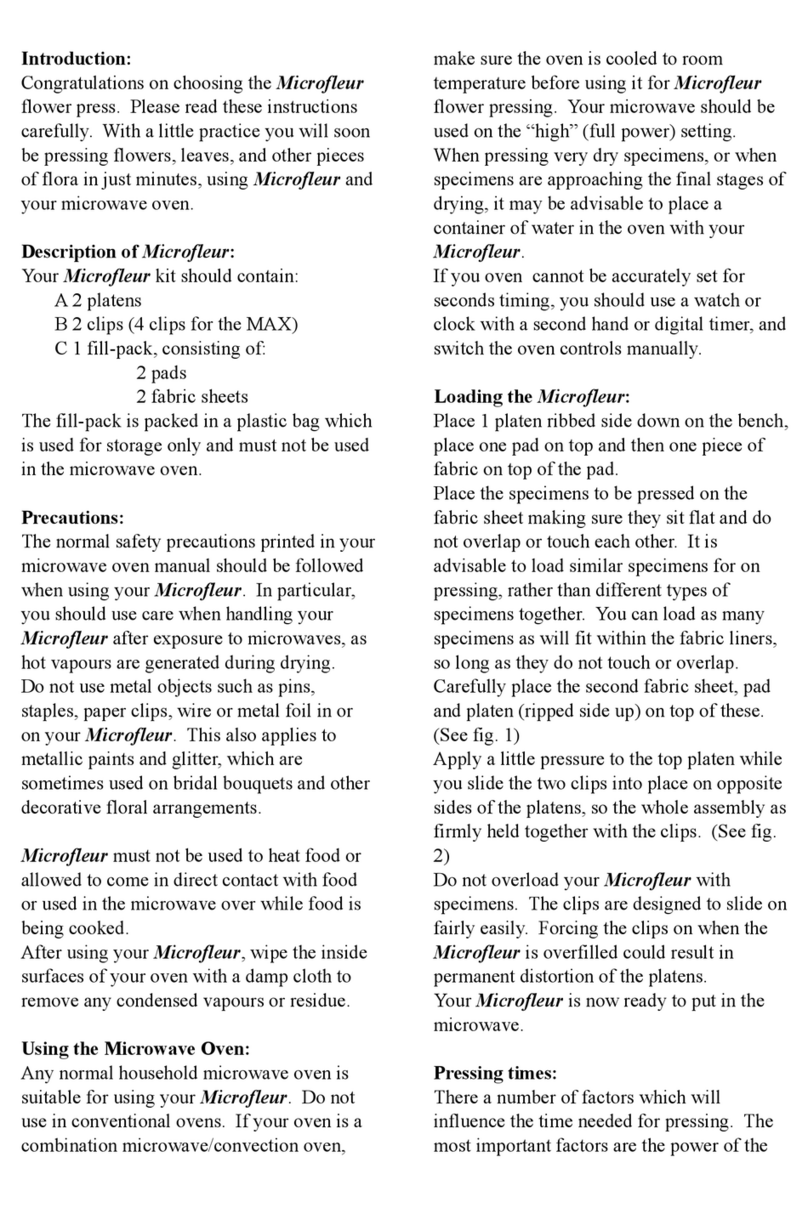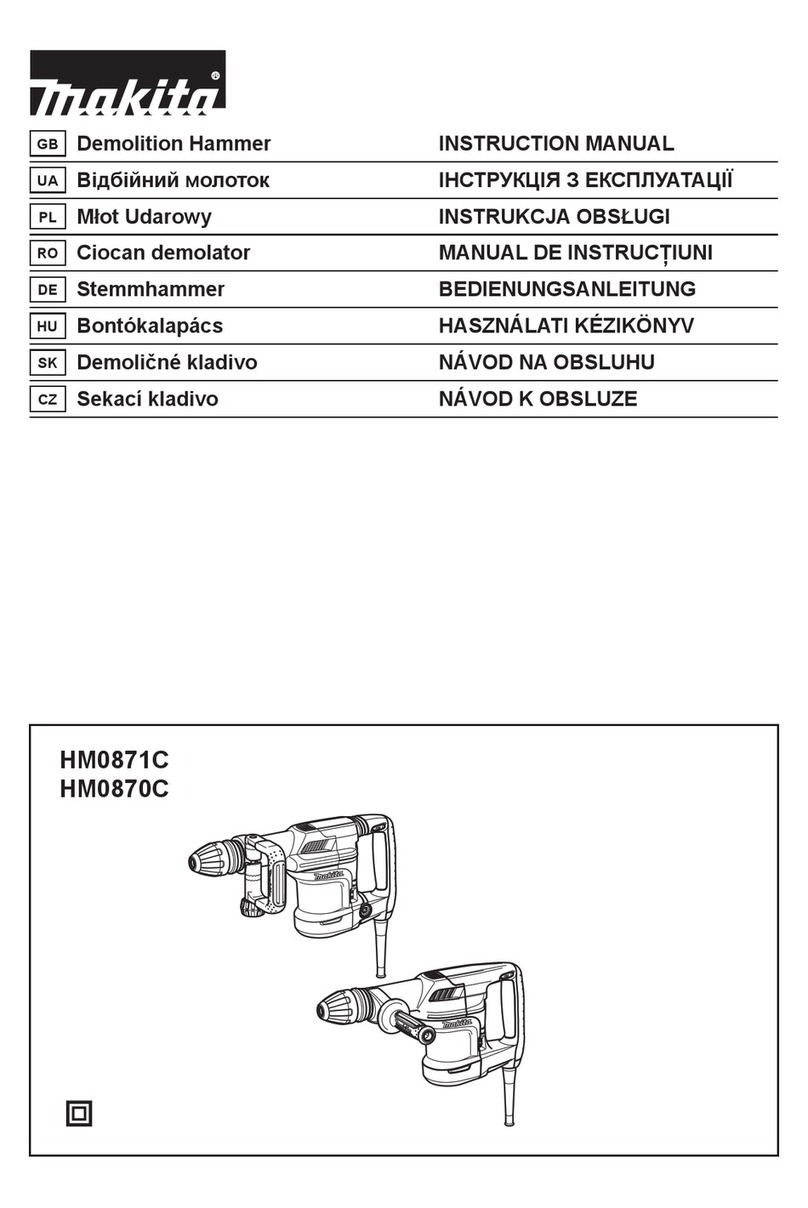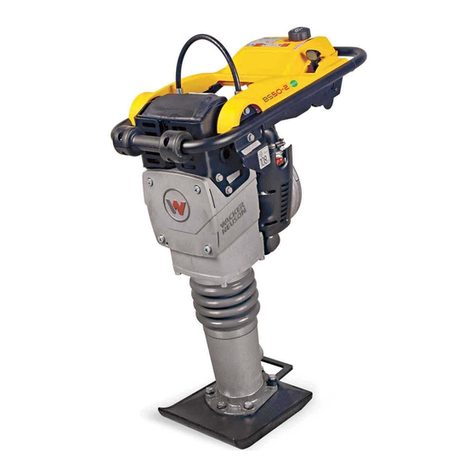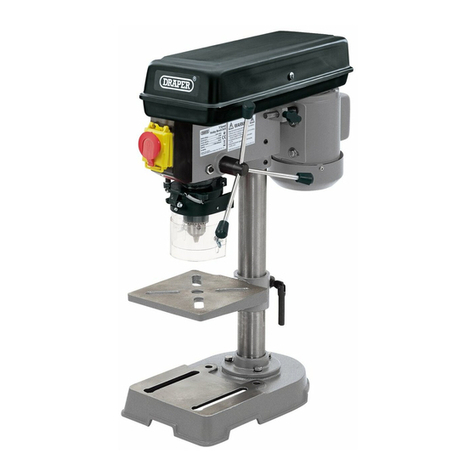Avid Power ACIW124 User manual

20V MAX CORDLESS IMPACT WRENCH
MODEL: ACIW124

TABLE OF CONTENTS
INTENDED USE....................................................................................3
SAFETY INSTRUCTIONS ....................................................................3
PRODUCT FEATURES.........................................................................8
PACKAGE CONTENTS ........................................................................8
TECHNICAL SPECIFICATIONS...........................................................9
CHARGING INSTRUCTIONS...............................................................9
BASIC IMPACT WRENCH OPERATION .............................................11
MAINTENANCE....................................................................................14
TROUBLESHOOTING..........................................................................14
DISPOSAL ............................................................................................14
PARTS LIST..........................................................................................15
EXPLODED VIEW.................................................................................16

3
This hand-held cordless impact wrench is intended to tighten and loosen mechanical
xings (nuts, bolts, etc). It is intended for domestic and light commercial use only. Any
other application is considered misuse.
General Safety Instructions For Power Tool Use
Read all safety warnings and all instructions. Failure to follow the warning and
instructions may result in electric shock, re and/or serious injury.
Most important: You must know how to safely start and stop this machine, especially
in an emergency.
Keep the work area tidy and clean. Attempting to clear clutter from around the
machine during use will reduce your concentration. Mess on the oor creates a trip
hazard. Any liquid spilled on the oor could result in your slipping.
Find a suitable location. If the machine is bench mounted, the location should
provide good natural light or articial lighting as a replacement. Avoid damp and
dust locations as it will have a negative eect on the machine's performance. If the
machine is portable do not expose the tool to rain. Do not operate power tools near
any ammable materials.
Keep bystanders away. Children, onlookers and passers-by must be restricted from
entering the work area for their own protection. The barrier must extend a suitable
distance from the tool user. Unplug and store all power tools that are not in use. A
power tool should never be left unnoticed while connected to the power supply. They
must be stored in a suitable location, locked up and kept from children.
Do not overload or misuse the tool. All tools are designed for a purpose and are
limited to what they are capable of doing. Do not attempt to use a power tool (or
adapt it in any way) for an application it is not designed for. Select a tool appropriate
for the size of the job. Overloading a tool will result in tool failure and user injury: This
includes the use of accessories.
Dress properly. Loose clothing, long hair and jewelry are all dangerous because they
can become entangled in moving machinery: This can also result in parts of body
being pulled into the machine. Clothing should be close-tted, with long hair tired back
and jewelry and neckties removed. Footwear must be fully enclosed and have a non-
INTENDED USE
SAFETY INSTRUCTIONS

4
SAFETY INSTRUCTIONS
slip sole.
Wear personal protective equipment (PPE). Dust, noise, vibration and swarf can be
dangerous if not fully emphasized. If the work involving the power tool creates dust or
fumes wear a dust mask. Vibration to the hand, caused by operating some tools for
long time use must be protected against. Wear vibration-reducing gloves and allow
long breaks between uses. Protect against dust and swarf by wearing approved safety
goggles or a face shield. These are some common hazards and preventions, however,
always nd out what hazards are involved within the machine/ work process and wear
the most suitable protective equipment.
Do not breathe contaminated air. If the work creates dust or fumes from the
machine (if possible) turn to an extraction system either locally or remotely. Working
outdoors can also help.
Move the machine as instructed. If the machine is handheld, do not carry it by the
power supply cable. If the product is heavy, ask a second or third person to help move
it safely or use a mechanical device. Always refer to the instructions for the correct
method.
Do not overreach. Operate the machine too far from you can result in a loss of
balance and your falling. This will result in injury.
Maintain your tools correctly. A well-maintained tool will do the job safely. Replace
any damaged or missing parts immediately with original parts from the manufacturer.
Keep blades sharp, moving parts clean, oiled or greased, handles clean and
emergency devices working.
Wait for the machine to stop. Unless the machine is equipped with a safety brake,
some parts may continue to move due to momentum. Wait for all parts to stop,
then unplug it from the power supply before making any adjustments, Carry out
maintenance operations or just nishing using the tool.
Remove and check setting tools. Some machinery requires the use of additional
tools or keys to set, load or adjust the power tool. Before starting the power tool
always check to make sure they have been removed and are safely away from the
machine.
Prevent unintentional starting. Before plugging any machine into the power supply,
make sure the switch is in the OFF position. If the machine is portable, do not hold the
machine near the switch and look out when putting the machine down, that nothing
can touch the switch.

5
Carefully select an extension lead. Some machines are not suitable for use with
extension leads. If the tool is designed for outdoor use, use an extension lead also
suitable for that environment. When using an extended lead, select one capable
of handling the current (amps) drawn by the machine in use. Fully extend the lead
regardless of the distance between the power supply and the tool. Excess current
(amps) and a coiled extension lead will both cause the cable to heat up and can result
in re.
Concentrate and stay alert. Distractions are likely to cause an accident. Never
operate a power tool if you are under the inuence of drugs, including alcohol or if you
are feeling tired. Being disorientated will result in an accident.
Have this tool repaired by a qualied person. This tool is designed to conform to
the relevant international and local standards and as such should be maintained and
repaired by someone qualied, using only original parts supplied by the manufacturer.
This will ensure the tool remains safe to use.
Additional Safety Instructions for Impact Wrenches
Important: It is recommended that this machine should not be modied or used for any
application other than that for which it was designed.
Power tools shall not be used in potentially explosive environment unless specically
designed for that purpose.
Improper tool movement due to reaction forces or breakage of inserted tool or reaction
bar may cause injuries.
Power tools shall be isolated from the energy source before changing or adjusting the
inserted tool.
Warning!
There is a risk of crushing by torque between a reaction bar and the workpiece.
There is a risk of being injured if hands are not kept away from the reaction bar,
especially when unscrewing in conned work spaces.
There is a risk of danger to persons from high-speed splinters being emitted from
impact wrenches in the case of socket failure. Only use properly hardened impact
sockets with this machine.
Use only sockets and adaptors which are in good condition and are intended for use
with impact wrenches.
Adopt a suitable posture to counteract normal or unexpected movement of the power
tool due to reaction forces from the power assembly tool.
SAFETY INSTRUCTIONS

6
Impact wrenches are not torque wrenches and are not designed or capable of
installing fasteners to specied torque. For fasteners requiring a specic torque, install
the fastener to well below the required value then complete the task with a hand
torque wrench to avoid damaging the fastener or workpiece.
Ensure the anvil ring is correctly maintained and if damaged or missing, replace it
immediately before work commences. Missing or damaged anvil rings may lead to
sockets detaching from the wrench while rotating at high speed.
Only use accessories specically hardened for impact use. Do not use standard
chrome type hand tool sockets as they will shatter and splinter.
Do not modify this impact wrench in any way.
When starting or nishing the removal and installation of fasteners there is a risk of
cursing between the tool and the workpiece due to sudden movement or reaction
forces.
Residual risk
Important: Although the safety instructions and operating manual for our tools contain
extensive instructions of safe working with power tools, every power tool involves a
certain residual risk which can not be completely excluded by safety mechanisms.
Power tools must therefore always be operated with caution.
Safety Instructions for Mains Powered Battery Packs and Chargers
Chargers
The charger is for indoor use only.
Before plugging the charger into the supply, check that the plug and the cable are in
good condition. If either is damaged, have the defective item replaced immediately by
a qualied person.
Only use a correctly rated mains outlet to provide power, do not plug into site
generators, attach to engine generators or D.C. sources. Do not use a mains socket
outlet that is not switched.
Use the correct charger in conjunction with its corresponding battery pack.
Do not charge any other batteries with the chargers. Any other application is
considered misuse.
Do not attempt to charge battery packs that are too hot (over 30°C) or too cold (under
5°C), if these conditions apply, set the battery pack aside to "normalize" before
SAFETY INSTRUCTIONS

7
proceeding with the charging operation.
Set up the charger and cable in a safe place when it won't be knocked, tripped over,
stepped on, etc. and when it is ventilated. Make sure the ventilation slots in the
charger are not obstructed, plug the charger into the socket outlet.
Battery packs
Before charging, read the instructions.
For indoor use. Do not expose to rain.
Do not charge any other manufacturer's battery packs using the chargers. Any other
application is considered misuse.
The battery must be removed from the application before it is recycled.
The charger must be disconnected from the supply mains when removing the battery.
Do not use any other than the designated batteries/chargers with this product.
Do not crush, open or burn the battery. Exposure to potentially harmful materials may
occur.
Do not expose to high temperatures over 45°C. The battery may degrade at high
temperatures.
Charge battery in conditions between 5 to 30°C with the specied charger designed
for this battery.
Do not use battery if it has been stored at 5°C or less. Allow it to normalize at room
temperature before usage/changing.
Warning!
Leaking battery packs.
The electrolyte in battery packs is corrosive. Avoid contact with the skin.
Connection to the Power Supply
Make sure the power supply information on the charger's rating plate is compatible
with the power supply you intend to connect.
If an extension lead is required, use an approved and compatible lead rated for this
appliance. Follow the instructions supplied with the extension lead.
If using an extension lead, follow the instructions that came with your lead regarding
maximum load while the cable is wound. If in doubt, ensure that the entire cable is
unwound. Using a coiled extension lead will generate heat, which could melt the lead
and cause a re.
Double insulated :The charger used by this product requires no earth connection as
SAFETY INSTRUCTIONS

8
supplementary insulation is applied to the basic insulation to protect against electric
shock in the event of failure of the basic insulation.
1. Socket
2. Rotational direction switch
3. On/O switch
4. Handle
5. Battery pack
6. Battery charger
7. Battery pack release button
1 x Cordless impact wrench
1 x Charger
2 x 4.0Ah Batteries
4 x Sockets
1 x User Manual
1 x Warranty card
PRODUCT FEATURES
PACKAGE CONTENTS
SAFETY INSTRUCTIONS

9
Model ACIW124
Rating voltage (DC) 20V MAX
No load speed 2300/1900 /1600rpm
Maximum torque (Forward / Reverse) 550N.m(406 ft-lbs)
Rating Voltage for Charger INPUT: 100-240VAC,50/60Hz 1.5A
OUTPUT: 21VDC, 2.3A
Battery capacity 4.0Ah
Charge time 2h
Charging the battery pack
To charge the battery pack, it must be removed from the tool.
To release the battery pack:
Press the battery pack release button and gently slide the battery pack o.
Plug the battery charger unit into a socket. The green LED will illuminate to show the
charger has power.
Slide the battery pack right in place to ensure two termnals well-connected make a
good connection.
TECHNICAL SPECIFICATIONS
CHARGING INSTRUCTIONS

10
After a few seconds delay, the red LED will light to show the battery pack is being
charged and the green LED will go out.
Ensure the battery pack is connected correctly. Sliding the battery pack
incorrectly may cause damage to the battery charger.
When the battery pack is fully charged, the green LED will light.
If the indicator lights fail to illuminate during the charging cycle, unplug the
charger from the power supply socket outlet and replace the battery pack.
Completing the charging cycle:
Disconnect battery charger with the power supply.
Remove the battery pack from the battery charger. Supporting the battery charger with
hand, pull out the battery pack from the battery charger.
Make sure to grasp the plug when removing from power supply to avoid damaging the
cord.
Caution
When the battery charger has been continuously used, the battery charger will be hot.
Once the charging has been completed, give 15 minutes rest until the next charge.
If the battery pack is charged when it is warm due to battery use or exposed to
sunlight, the battery pack will not be recharged. In such a case, let the battery pack
cool before charge.
If the red indicator ickers rapidly at 0.2- second intervals, check for and take out any
foreign objects in the charger's battery slot.
Battery Pack Charging Status
To display the amount of charge left in the battery pack press the charge level indication
button.
CHARGING INSTRUCTIONS

11
Installing and removing
This impact wrench is supplied with a 1/2 square drive and an electric brake. Never use
any sockets or accessories that are not hardened for impact use. Never use standard
chrome vanadium steel sockets which can shatter and can cause personal injury.
To t a socket:
Push t the socket over the anvil. The friction based ring holds the socket securely in
place.
To remove a socket:
Pull the socket away from the anvil to remove.
Note: Extra eort may be required when tting and removing brand new sockets on their
initial usage.
Rotational Drive Selection
The forward/reverse drive selector switch determines the direction of rotation of the
drive.
To alter direction of rotation:
BASIC IMPACT WRENCH OPERATION
CHARGING INSTRUCTIONS

12
Stop the machine and push the switch to the left or right.
When the direction switch is pushed to the left, the drive will rotate clockwise.
When the switch is pushed to the right, the drive will rotate anticlockwise.
Before operation, check that the switch is set in the required position. Do not change
the direction of rotation until the wrench comes to a complete stop.
When the wrench is not in use move the direction switch to the neutral position (the
middle setting) to lock the trigger out.
Note: Failure to use the neutral position may activate the trigger inadvertently. This
inadvertent operation may cause the wrench to damaged.
Variable Speed Trigger
When the trigger is depressed, the drive will rotate (provided the direction switch is set in
the forward or reverse position). This trigger switch is electronic which enables the user
to vary the speed continuously.
The speed varies according to how far the trigger switch is depressed.
The further it is depressed, the faster the drive spindle will rotate.
The lighter it is depressed, the slower it will rotate.
Note: If the fastening is heavily corroded, or extremely tight, it may be necessary to
release the xing by hand before continuing with the wrench.
Always tighten xings to the correct torque as indicated by the manufacturer using
a calibrated torque wrench. Failure to do so may result in the xing damaged or
insuciently tightened.
BASIC IMPACT WRENCH OPERATION

13
LED Worklight
To aid use in conned and inadequately lit spaces the LED worklight automatically
illuminates when the trigger is activated.
Variable Torque Selector
Output force can be varied by pressing the selector button to a desired level, this helps
to limit the output torque.
Operation
Proper fastening torque is determined by the kind of fastening, the size of the fastening
or the material or workpiece.
It is advisable to perform a test operation to determine the proper fastening time for
the fastening you are using.
Hold the wrench in straight alignment to the fastening.
Depress the wrench and use it in the required amount of time.
After fastening, always check the torque with an appropriate torque wrench.
Note:
Do not use this tool to install wheel nuts without a torque limiting device. Doing so
could result in galled or broken nuts.
Using a universal joint or extension bar may reduce the fastening force of the impact
wrench and require longer fastening time.
Using an impact wrench creates heat. The metal housing at the front of the wrench
will become hot. Under certain circumstances, the force required to tighten or remove
xings may cause the xings themselves to become very hot! Wear suitable gloves to
prevent burns.
BASIC IMPACT WRENCH OPERATION

14
Regular inspection and cleaning reduces the necessity for maintenance operations and
will keep your tool in good working condition.
The motor must be correctly ventilated during tool operation. Avoid blocking the air inlets
and vacuum the ventilation slots regularly.
Problems Possible cause Required action
Motor does not start
-Battery pack does not
charge.
-Battery fault or damage.
-Re-charge battery
-Replace battery
Motor runs, but slowly/
losing power
-Battery pack no charge.
-Battery pack fault or
damaged.
-Re-charge battery
-Replace battery
Battery pack doesn't
charge/non- illumination
/ non illumination of
charger
-Charger fault -Replace charger
At the end of the machine's working life, or when it can no longer be repaired, ensure
that it is disposed according to national regulations. Expired batteries must be recycled/
disposed in accordance with the appropriate regulation or legislation.
Contact your local authority for details of collection schemes in your area.
MAINTENANCE
TROUBLESHOOTING
DISPOSAL

15
PARTS LIST

16
EXPLODED VIEW




Table of contents
Other Avid Power Power Tools manuals
Popular Power Tools manuals by other brands

Texas Pneumatic Tools
Texas Pneumatic Tools TX456 Service and operation manual

Makita
Makita BPJ140 instruction manual
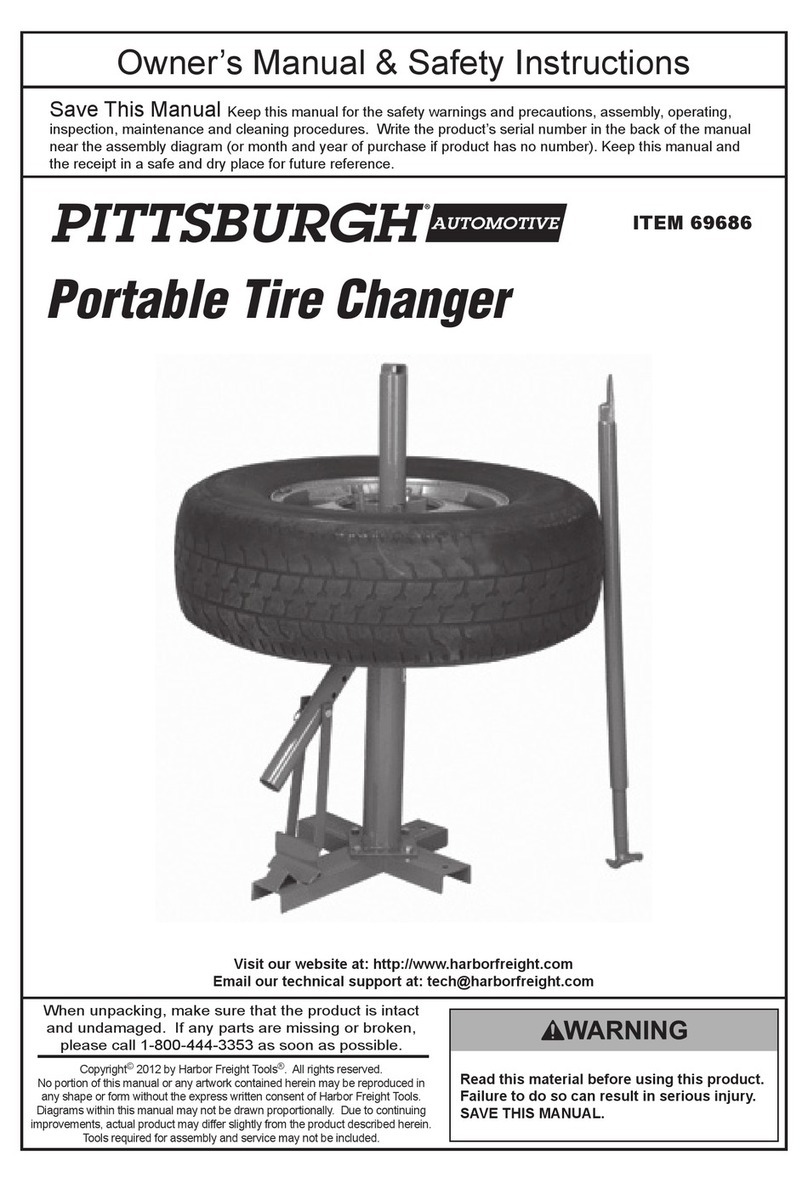
Pittsburgh
Pittsburgh Pittsburgh Automotive Portable Tire Changer Owner's manual & safety instructions

Swiss Military
Swiss Military SMT-480 instruction manual
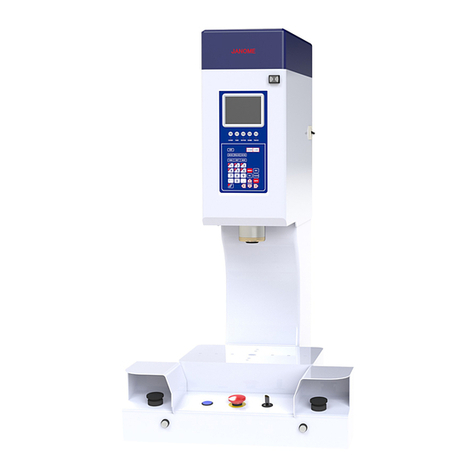
Janome
Janome JP-104 Operation manual
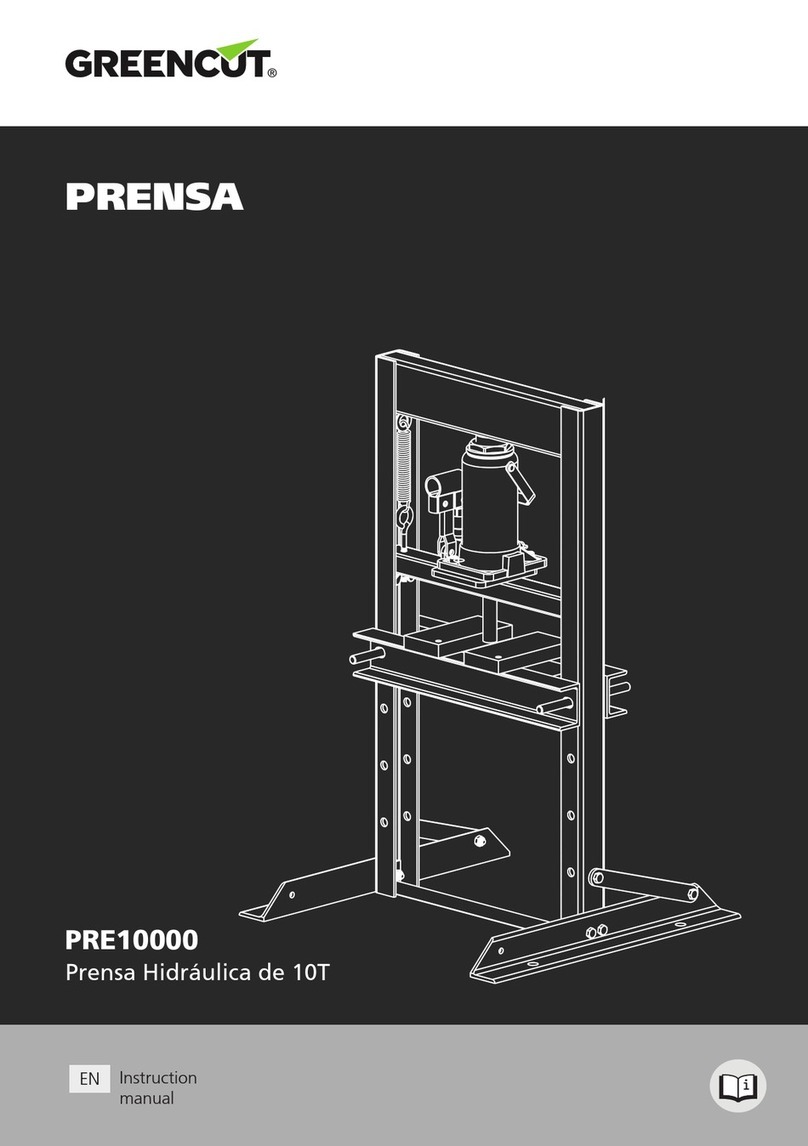
Greencut
Greencut PRE10000 instruction manual
